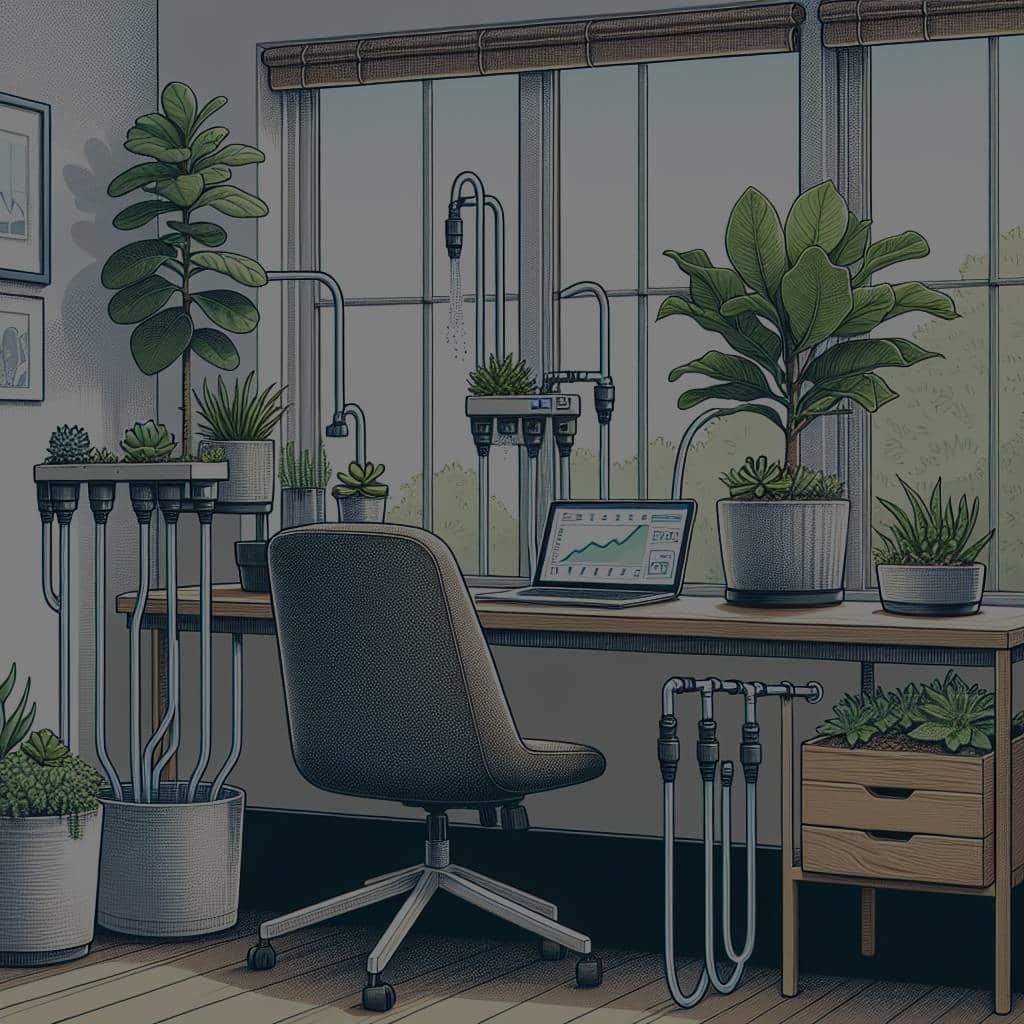How Can You Create a Self-Watering Plant System for Your Home Office?

In the world of home offices, an often overlooked aspect is the styling and beautification of the workspace. A well-decorated office can serve as a source of inspiration and motivation, improving your productivity. Plants are an excellent choice for this purpose; they add a touch of nature to your office, create a calm environment and also help to purify the air. However, one common challenge most home office owners face is forgetting to water their plants. In this article, we’ll guide you on how to create a self-watering plant system. This DIY system will ensure your plants get the right amount of water they need to thrive, even when you’re too busy with your work.
Understanding the Importance of Proper Watering
Before we delve into creating the self-watering system, it’s essential to understand why proper watering is crucial for your plants. Plants, just like humans, need water to survive. Water is needed for photosynthesis, the process through which plants produce food. Besides, water also aids in the transport of nutrients from the soil to the plant.
A lire également : How to Craft a Vintage-Inspired Home Office with Antique Finds?
Overwatering or underwatering your plants can lead to disastrous effects. Overwatering can cause the roots of the plant to rot, while underwatering can lead to wilting and eventual death of the plant. This is where a self-watering plant system becomes invaluable. It ensures your plants get just the right amount of water they need for optimal growth.
Gathering Your Materials
The first step in setting up a self-watering plant system for your home office is gathering all the necessary materials. This DIY project doesn’t require any complicated tools or materials, most of which you likely already have in your homes. You will need:
Lire également : How to Integrate a Vertical Herb Garden into Your Kitchen Design?
- A plastic bottle (2 Liter bottles work great)
- A piece of string or yarn
- A drill with a small bit
- A plant
- Soil
- Water
Before you start, make sure to clean the plastic bottle thoroughly. You can find images on wikihow to guide you through the cleaning process if you’re unsure.
Creating the Self-Watering System
With your materials ready, the next step is to create the self-watering system.
Start by cutting the plastic bottle in half, make sure the cut is neat and straight. The bottom half of the bottle will be where your plant will reside, while the top half will serve as the water reservoir.
Next, drill a small hole in the cap of the bottle, then thread your string or yarn through the hole, ensuring it’s long enough to reach the bottom of the bottle when it’s inverted. This string will act as a wick, drawing water from the reservoir into the soil.
Then, invert the top half of the bottle (with the cap and string) and place it into the bottom half. Fill the top half with soil and plant your plant. Pour water into the reservoir, and your self-watering plant system is ready!
Maintaining the Self-Watering System
Creating a self-watering plant system is one thing, but maintaining it is another crucial aspect that shouldn’t be ignored. To ensure your plants are getting the right amount of water, always check the water level in the reservoir. Refill the reservoir whenever it’s near empty.
Avoid using water that’s too hot or too cold as it can shock the plant and affect its growth. Room temperature water is ideal for most plants. Also, it’s important to occasionally check the string or wick. If it becomes clogged or dirty, it will not be able to effectively transport water from the reservoir to the plant.
Advantages of a Self-Watering Plant System
Aside from the obvious advantage of not having to remember to water your plants, a self-watering plant system offers several other benefits. It can help to conserve water since no water is wasted through evaporation or runoff. Additionally, it reduces the risk of overwatering or underwatering your plants, as it provides a consistent supply of water.
In conclusion, a self-watering plant system is a simple yet efficient way to ensure your office plants get the care they need, leaving you free to focus on your work.
Remember, a healthy plant is a sight to behold and can significantly enhance your workspace aesthetics. So, why not give this DIY project a try? Your office plants will thank you for it!
Optimizing Your Self-Watering System
To make the most out of your self-watering system, some further steps can be considered. These steps are aimed to promote the maximum growth and health of your plants.
Firstly, consider the type of plant you’re planning to incorporate into your self-watering system. Different plants have varying water requirements. Some plants thrive in consistently moist soil, while others prefer their soil to dry out between watering. Understanding your plant’s needs will help you determine the best way to manage the self-watering system.
Secondly, the type of soil used in the self-watering planter is crucial. Some soils are more absorbent than others. Using a soil that doesn’t absorb water well could lead to the water not reaching the plant’s roots effectively. On the other hand, a soil that is too absorbent could result in the roots becoming waterlogged. Experiment with different types of soil to see which works best with your specific plant and self-watering system.
Lastly, pay attention to the location of your self-watering planter. Most plants need a good amount of sunlight to photosynthesize effectively. Ensuring that your plant is placed in a location where it can get its share of sunlight will promote its growth.
Conclusion: The Rewards of a Self-Watering Plant System
Implementing a self-watering plant system in your home office holds numerous benefits. It not only brings the appeal of nature into your workspace but also ensures that your plants receive the appropriate amount of water, promoting their health and growth. This system takes off the burden of remembering to water your plants, allowing you to concentrate on your work.
In the long run, a self-watering system like the one you can create using a plastic bottle will save you time and energy. It also helps in water conservation as it prevents wastage due to runoff and evaporation. Furthermore, this DIY project lets you get creative and add your personal touch to your workspace.
Remember, consistency is vital in maintaining your self-watering system. Regularly check the water level, the condition of the wick, and the temperature of the water. Additionally, ensure your plants get adequate sunlight and use the right kind of soil for optimized watering.
Finally, don’t be afraid to experiment! Each plant has different needs, and it might take a bit of trial and error to find the perfect balance for your self-watering system. Once you’ve got the hang of it, you’ll have an office environment that not only looks great but is also filled with the lush vitality of well-cared-for plants.
With your new self-watering plant system, your office plants will be more than just decoration; they will become a testament to your ingenuity and commitment to nurturing nature, even in the midst of your workspace.
